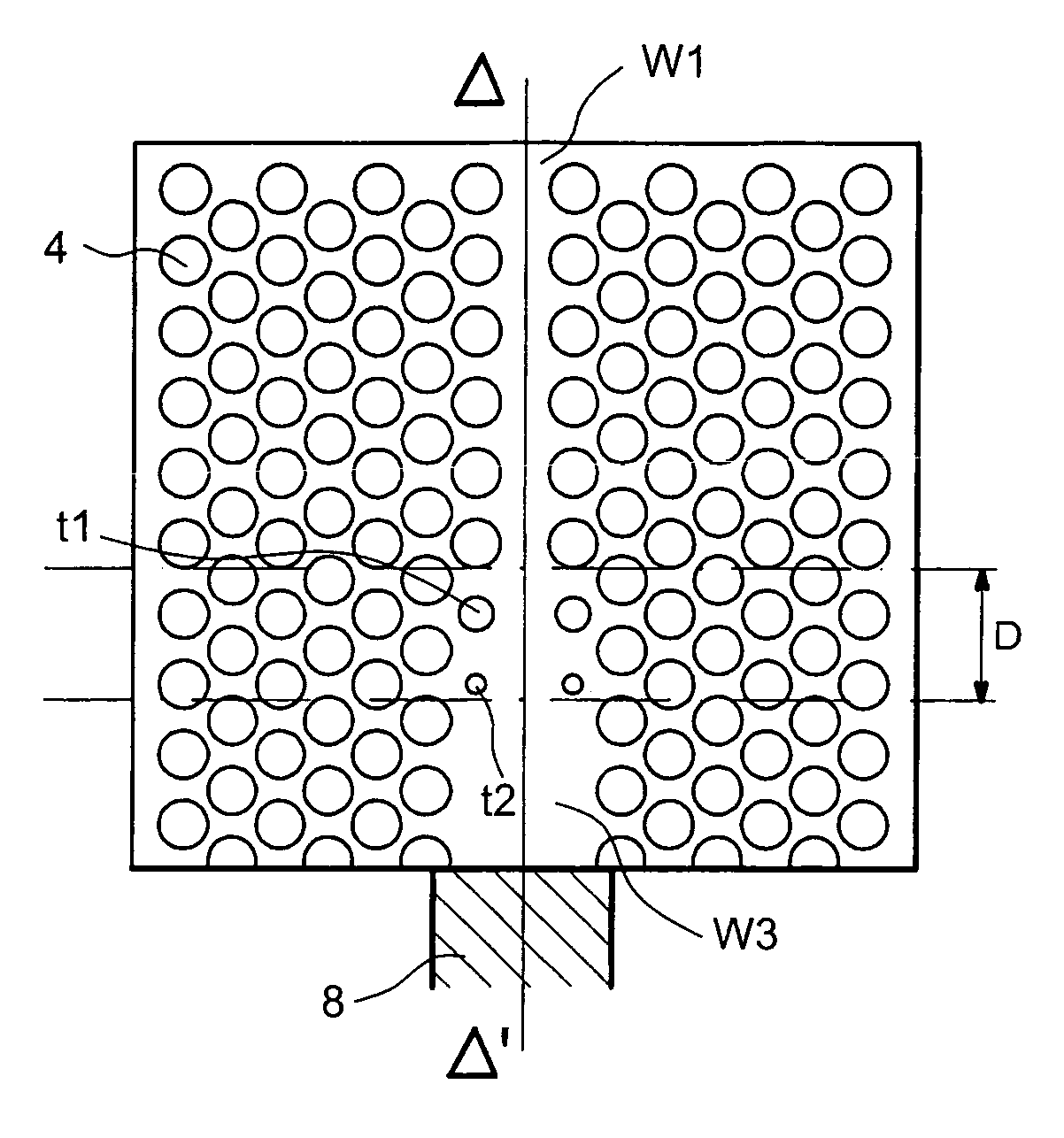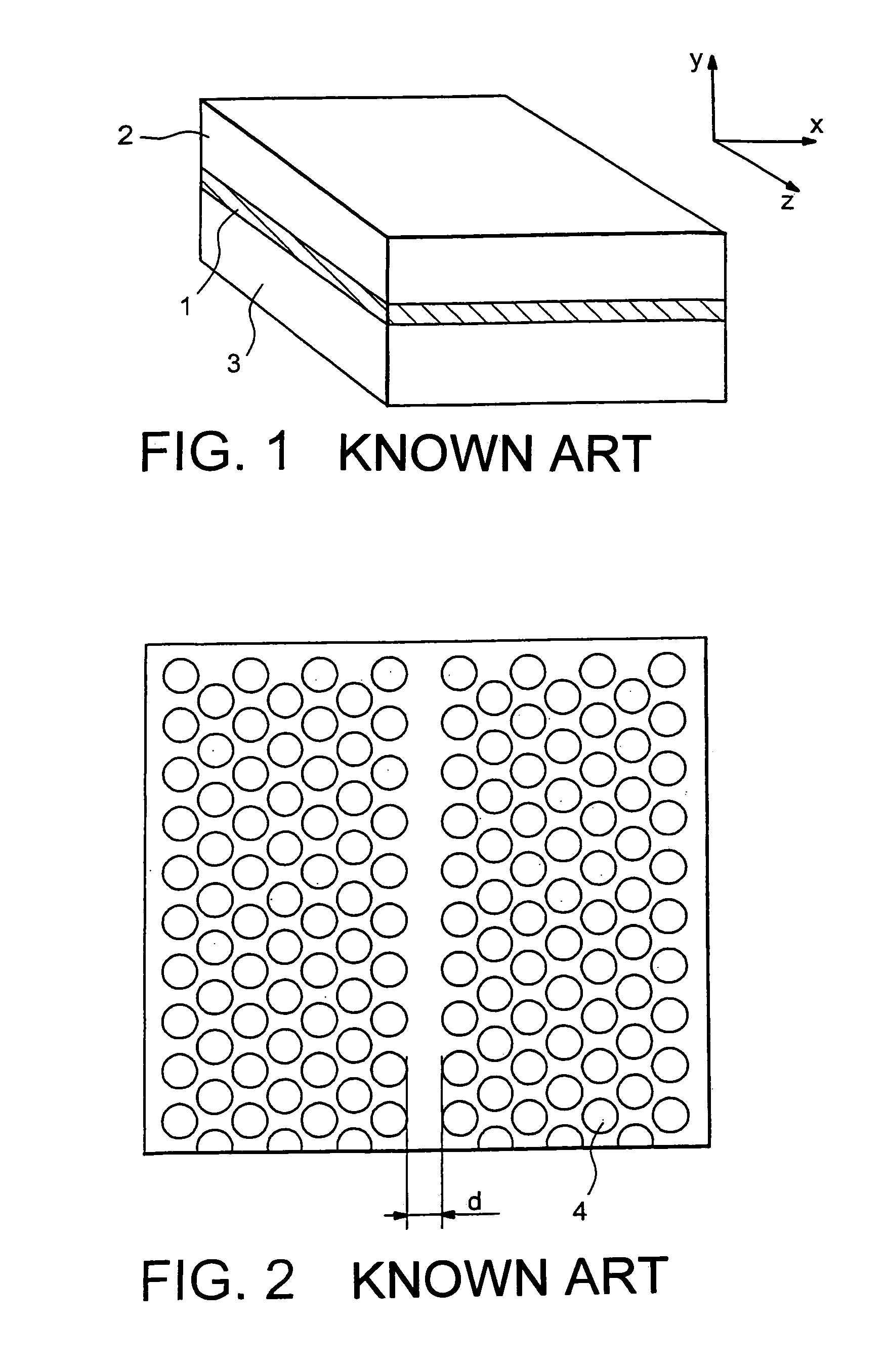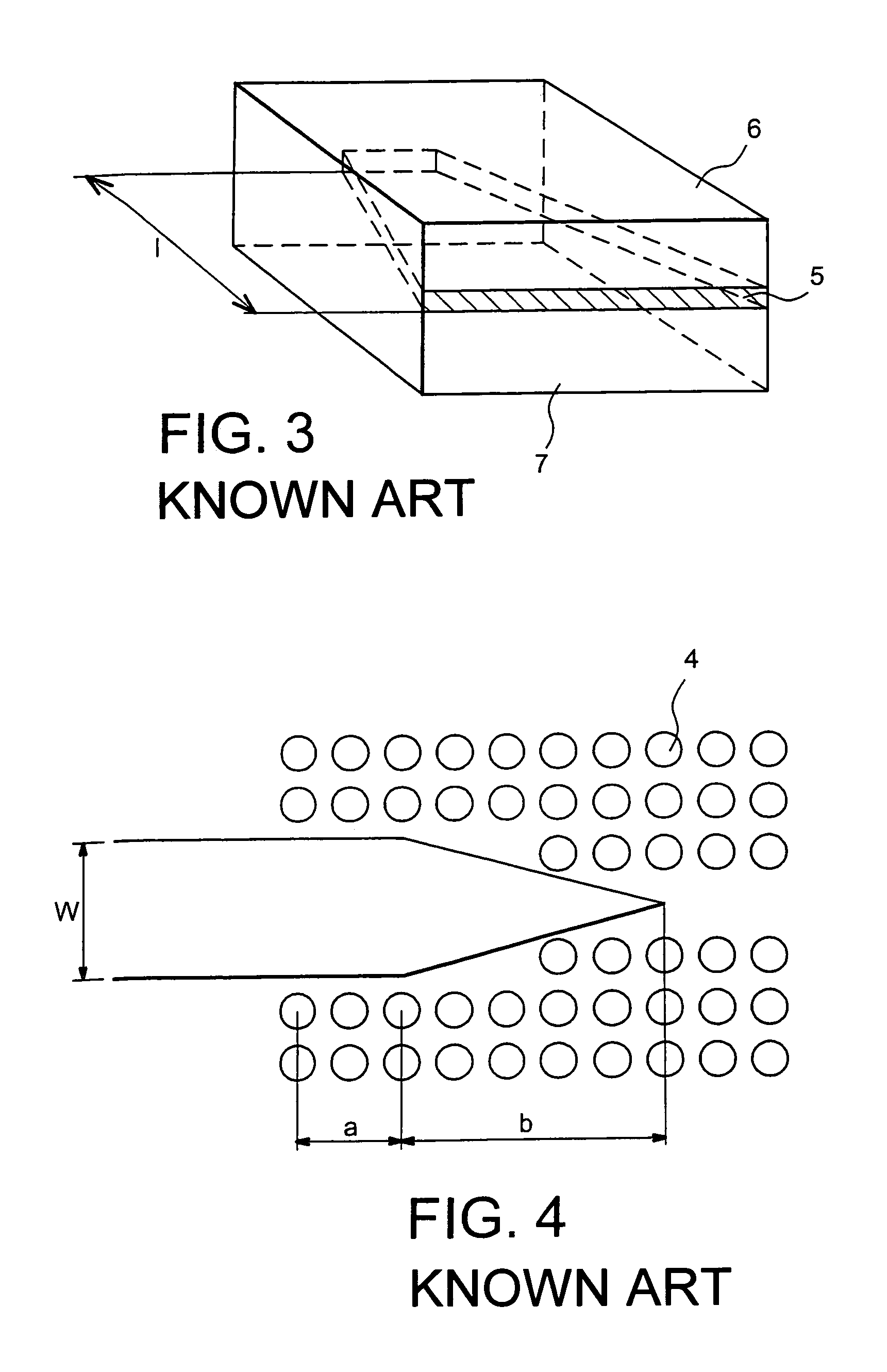Photonic crystal structure for mode conversion
a technology of mode conversion and crystal structure, which is applied in the direction of optical waveguide light guide, instruments, nanotechnology, etc., can solve the problems of affecting the quality of optical components, the inability to equip such lasers with mode converters, and the substantial increase in size and hence the cost of components, so as to achieve short optic transitions and low losses
- Summary
- Abstract
- Description
- Claims
- Application Information
AI Technical Summary
Benefits of technology
Problems solved by technology
Method used
Image
Examples
Embodiment Construction
[0052]FIGS. 1, 2, 3, 4 and 5 have been previously described and do not require further description.
[0053]FIG. 6 is an overhead view of a first example of mode converter according to the invention. The mode converter is made in a photonic crystal structure consisting of a set of patterns 4. Patterns 4 are, for example, air holes obtained by etching a semiconductor material. The vertical confinement of the propagating wave is ensured by a layer of high index (GaInAsP) the thickness of which is, for example, 500 nm, positioned between two layers of material with a lower index (InP). The air-holes are positioned in the direction of wave propagation and for example define a triangular lattice whose mesh size is 450 nm. The diameter of the holes may be 300 nm for example with a depth of 1 μm. Isotropic etching, for example plasma dry etching, is used to make the holes. The converter operates the conversion of a W1 guide mode into a W3 guide mode and reciprocally.
[0054]Guide part W1 is cha...
PUM
 Login to View More
Login to View More Abstract
Description
Claims
Application Information
 Login to View More
Login to View More - R&D
- Intellectual Property
- Life Sciences
- Materials
- Tech Scout
- Unparalleled Data Quality
- Higher Quality Content
- 60% Fewer Hallucinations
Browse by: Latest US Patents, China's latest patents, Technical Efficacy Thesaurus, Application Domain, Technology Topic, Popular Technical Reports.
© 2025 PatSnap. All rights reserved.Legal|Privacy policy|Modern Slavery Act Transparency Statement|Sitemap|About US| Contact US: help@patsnap.com



